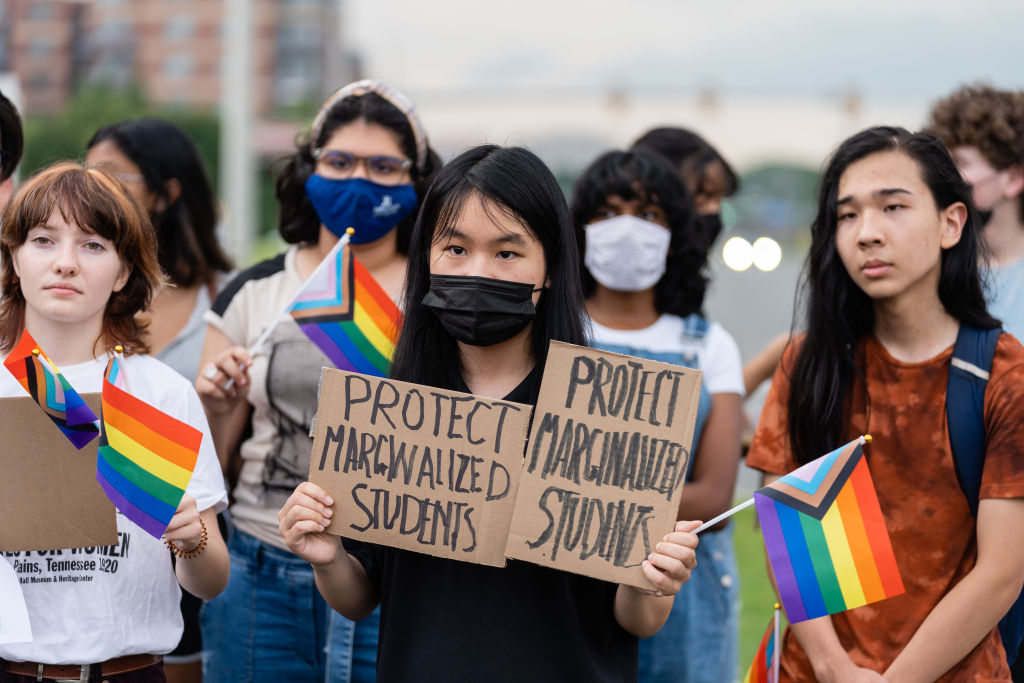
It’s time to talk about women’s economics with attitude. It’s time to laugh at what is often absurd and call out what is dangerous. By focusing on voices not typically part of mainstream man-to-man economic discourse, Women Unscrewing Screwnomics will bring you news of hopeful and practical changes and celebrate an economy waged as life—not as war.
The Localvore movement may have grown a bit hoity-toity, but it is not a crazy idea to grow and eat food locally. It’s good for local farms, and farmers’ markets are good for community mingling where little else brings us together anymore. It’s even good for the least hoity-toity among us, when a state or region is smart enough to make affordable local food a matter of public policy.
Like a stone thrown in the water, the ripples of outcome widen. When the poorest eat a healthier diet, a state’s healthcare costs go down and educational outcomes go up. Transportation of its food costs less and so does its impact on the climate. As Texan rabble-rouser Jim Hightower likes to put it: “Everybody does better when everybody does better.”
But unfortunately, the ripples in that water metaphor go as far and wide when bullshit is thrown into it. The widening rings go as far, but the water isn’t drinkable. It carries disease. I’m talking about the digital spinach we ingest from a virtual pool in greater amounts than ever. When it’s difficult to tell what is local and nourishing, some stuff can make you very sick.
The most alarming news I’ve heard in a month of alarming news isn’t that right-wing demagogues are spending money to buy out newspapers for profit and hollowing them out. Corporate takeover of the U.S. press has been going on for decades. Ben Bagdikian, who helped publish The Pentagon Papers first warned us about this trend in Media Monopoly, now updated as New Media Monopoly.
No, what’s more alarming is learning there are thousands of “articles” being run in the Miami Courant, Houston Republic, San Francisco Sun, Chicago City Wire and dozens of other local newspapers—only none of these actually exist.
Since 2004, according to the American Journalism Project, 2100 local newspapers have shut their doors, resulting in 1800 communities losing their local newsrooms. As journalism lost financial security and status, more women—including women of color—gained entry and repopulated newsrooms that remained, even becoming the majority today at 53.4 percent.
Yet since 2008, our remaining papers had lost 60 percent of their newsroom jobs, diminishing our fourth estate’s ability to speak truth to power—”power” being in the U.S. another word for “money.”
So what about those thousands of articles? Where did they come from? Jim Hightower reports there are some 1,300 websites owned and run by a single white male-dominated entity, Metric Media (MM), a right-wing political machine, spouting conspiracy disinformation.
The Columbia Journalism Review investigated Metric Media this year, finding its low-cost, automated reporting and distribution involved five intertwined data companies that not only publish fake news with fake bylines and quotes, but whose principals have ties to “financial backing from … some of the biggest Republican contributors in the country, including foundations tied to the Koch, Mercer and Uihlein families.”
Bradley Cameron, MM’s president who also heads Situation Management Group, says he is “currently retained by private investors to develop a national media enterprise,” but provides no information about who these private investors are, nor did he or any officer or owner from MM’s five companies respond to inquiries from Columbia Journalism Review.
While posing as legitimate “local news,” these platforms deliver fear in the form of partisan misinformation about critical race theory, COVID-19 school lockdowns, crime and transgender students in sports. I looked more closely at this when a community school near me had to shut down its website because of an obscene transphobic hack attacking the girls volleyball team. Two follow-up community meetings on transgender rights were canceled when the school got threatening phone calls.
Even when incendiary articles are printed in eight-page paper editions, delivered door to door, as recently occurred in Illinois, no contact or editorial info is provided to readers. That’s because as Noah Asimow headlined the trend in Editor & Publisher: “‘Deceptive’ Chicago City Wire Hitting Mailboxes Looks Like A Newspaper. But It’s Really a Conservative Campaign Mailer.”
“Because the publications are protected free speech, the onus falls on readers to educate themselves about the publication’s origins,” Asimow wrote, “particularly political mailings like Chicago City Wire, designed to appear like newspapers.”

Judd Legum, whose Popular Information newsletter regularly tracks dark money, reported that in the first 10 months of last year, about 12,000 anti-critical race theory articles appeared on Metric Media’s sites. CRT is taught in some law schools, not public elementary or high schools. But by making CRT a misunderstood catchphrase, more than 25 states have taken legislative or other actions to silence the teaching of a history that admits to U.S. slavery and its racist legacy.
It’s a free country, you might say, but Hightower is concerned that such cynical propaganda disguised as news causes real harm. Misinformation leads to teachers being fired or quitting, school boards being disrupted or even shut down out of fear—while trust in fellow citizens and elections is undermined.
Remember, the virtual world never claimed to be true. Its intelligence proudly bragged its first name: “Artificial.” So how exactly have we so quickly accepted a world turned inside out for data’s sake? You cannot be viewed now as real, until you are visibly virtual, and ideally with a following, loaded with “likes” from strangers you can’t place or remember.
It doesn’t matter because they don’t know you either. They don’t care that, say, you’re deadly allergic to bee stings, and your latest marriage to a beekeeper hurt like hell, and your lately deceased mother had always told you so. No, your virtual friends are busy telling you about their honey-sweet lives, their buzzy career choices, their smiling intact families, their deceased ones, beloved, always.
Those aren’t blatant lies. Given your gray-celled intelligence, you are smart enough to know there is more to their stories, too. But living with distorted mirrors can warp perceptions and our habits of mind. And who has time enough to intimately know 900 non-local friends? Or to parse out what CRT really is? Or to check the political facts or nutty tone of the info you see in the Miami Courant, Houston Republic, San Francisco Sun or Chicago City Wire? There’s still only 24 hours in a day.
Already the average American adult is spending 3 hours and 43 minutes on screen time daily. That’s not virtual. That’s 50 days a year.
Local news in the local paper about people you know, at least by reputation or neighborhood, might evoke a bit of empathy. Say someone went to the hospital with a near-fatal bee sting. Maybe their letters to the editor proved they had a screw loose, but you might have also seen their mother’s obituary, the cousin whose house burned down, the valedictorian who won honors and married your nephew. Though you voted differently, you rooted for the same main street, the same school colors. Keeping it local and real, three-dimensional lives could be glimpsed at least.
A coalition of over 3,000 locally owned non-profit newsrooms are trying to restring community sinews and accountability. They’re backing a Local Journalism Sustainability Act—but the bill needs a lot more tinkering. It proposes tax credits to channel government money for local newspapers in digital form only. It overlooks the appeal of tax credits for any greedy owners who already gutted the fourth estate in a city near you.
Will public money for your local paper be scorned as unpatriotic, in a way similar to public support for public television? Or public health? Only if we swallow more virtual lies about what really makes a democracy and a free and honest citizen. Columbia Journalism Review says 2020 federal funding of public media cost $1.40 per capita here. That compares to $159 for each television’s BBC hookup in the U.K. But ask yourself: Can we afford not to speak Localvore truth to dark money’s lying power?
Up next:
U.S. democracy is at a dangerous inflection point—from the demise of abortion rights, to a lack of pay equity and parental leave, to skyrocketing maternal mortality, and attacks on trans health. Left unchecked, these crises will lead to wider gaps in political participation and representation. For 50 years, Ms. has been forging feminist journalism—reporting, rebelling and truth-telling from the front-lines, championing the Equal Rights Amendment, and centering the stories of those most impacted. With all that’s at stake for equality, we are redoubling our commitment for the next 50 years. In turn, we need your help, Support Ms. today with a donation—any amount that is meaningful to you. For as little as $5 each month, you’ll receive the print magazine along with our e-newsletters, action alerts, and invitations to Ms. Studios events and podcasts. We are grateful for your loyalty and ferocity.





